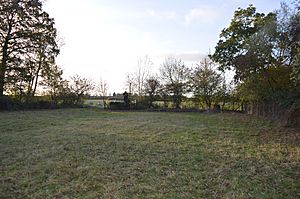Chettisham Meadow facts for kids
| Site of Special Scientific Interest | |
 |
|
| Area of Search | Cambridgeshire |
|---|---|
| Interest | Biological |
| Area | 0.7 hectares |
| Notification | 1983 |
| Location map | Magic Map |
Chettisham Meadow is a special place for nature, located west of Chettisham in Cambridgeshire, England. It covers about 0.7 hectares, which is roughly the size of a large football field. This meadow is officially recognized as a Site of Special Scientific Interest (SSSI) because of its unique plants and natural features. It is looked after by the Wildlife Trust for Bedfordshire, Cambridgeshire and Northamptonshire, an organization that helps protect wildlife and natural spaces.
Contents
What Makes Chettisham Meadow Special?
Chettisham Meadow is a beautiful grassland area. It sits on a type of soil called calcareous clay, which means it has a lot of chalk or lime in it. This special soil helps certain types of plants to grow that you might not find everywhere else.
A Glimpse into History
If you look closely at the meadow, you can still see signs of how people farmed here a long time ago. There are gentle bumps and dips in the ground, which are evidence of something called ridge and furrow farming. This was a common way to grow crops in medieval times, showing that this land has been used by people for centuries.
Amazing Plants to Discover
The meadow is home to many interesting flowering plants. Some common ones you might spot include the bright yellow cowslip. But what makes Chettisham Meadow truly special are some of its rarer residents. Keep an eye out for the unique adder's tongue fern, which has a very distinct shape. You might also be lucky enough to see the uncommon green-winged orchid, known for its beautiful and delicate flowers. These special plants are a big reason why the meadow is protected.
How to Visit Chettisham Meadow
If you want to explore Chettisham Meadow, you can find access from Church Farm. This farm is located on a road called The Hamlet. From there, you can follow a track that goes underneath the A10 main road. This track then curves around to meet another track called The Balk. Once these two tracks meet, you'll find a footpath that leads directly to the entrance of the nature reserve. It's a great spot to enjoy nature and see some rare plants!

